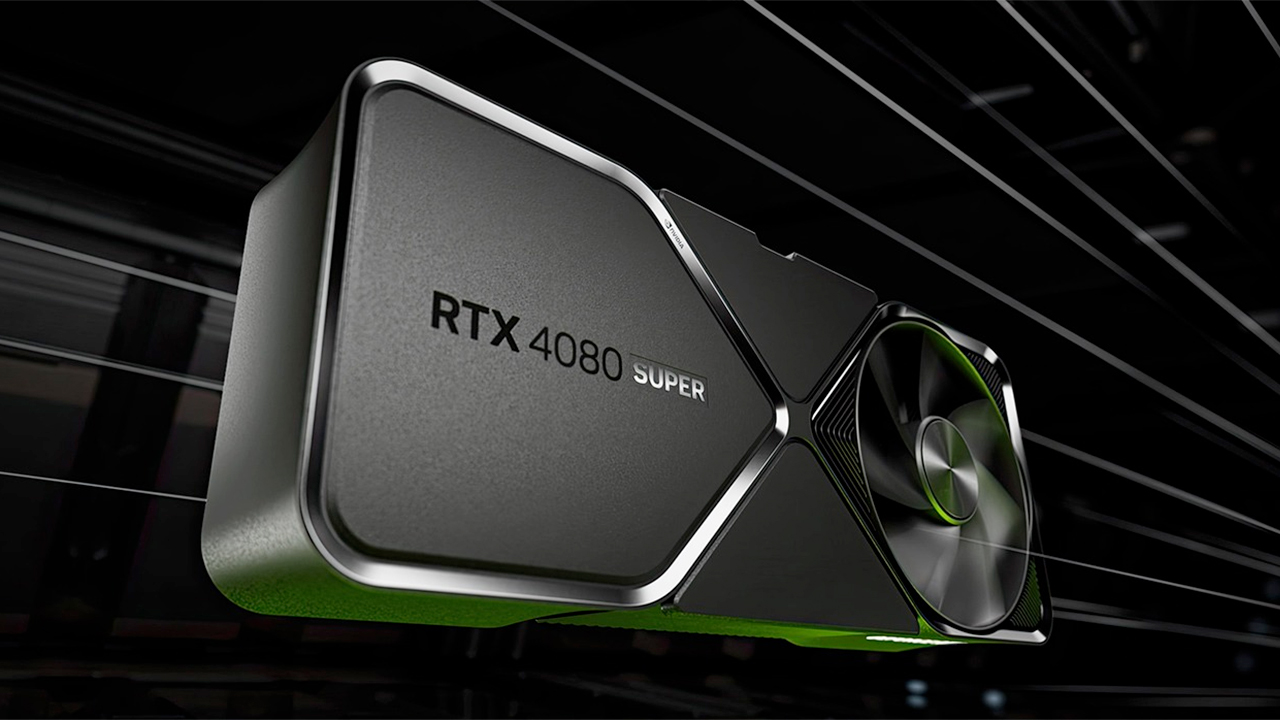Nvidia RTX 5080 allegedly adopts faster 30 Gbps GDDR7 modules, delivering 960 GB/s of bandwidth — The remaining Blackwell lineup is expected to stick with slower 28 Gbps memory

Rumors suggest that Nvidia will launch the RTX 5080 with 30 Gbps GDDR7 memory, while the remaining Blackwell lineup will stick with slower 28 Gbps modules, via Benchlife as spotted by Harukaze on X. Do note that this also includes the flagship RTX 5090. Still, given the substantial disparities in CUDA core count and other specifications between the RTX 5090 and RTX 5080, a small memory nerf is unlikely to make a difference to the flagship.
Nvidia's RTX 50 series is expected to be the first GPU lineup to debut with GDDR7 memory. GDDR7 touts several advantages over its predecessor such as higher speeds and greater density. Upcoming GDDR7 offerings from Samsung promise speeds of up to 42.5 Gbps in 24Gb (3GB per module) capacities. Mainstream and budget GPUs suffer from narrow bus widths that limit VRAM capacities to a paltry 8GB or 12GB (128-bit/192-bit) using 16Gb modules. While newer 24Gb modules can theoretically improve these numbers up to 12GB and 18GB respectively, don't expect availability until 2025 or later, likely in the form of a SUPER refresh.
With that context in mind, Benchlife's report suggests that Nvidia will use slower 28 Gbps GDDR7 modules across all its Blackwell series of GPUs, except for the RTX 5080. Like its predecessor, the RTX 5080 is rumored to possess the fastest memory in the entire lineup, this time at 30 Gbps, allowing it to dish out 960 GB/s of bandwidth if we assume a 256-bit memory interface. Previous leaks suggest the RTX 5080 will ship with 16GB of VRAM and that configuration is only possible with 16Gb modules and a 256-bit interface, so our calculations stand consistent.
Adding to the mix, AMD's RDNA 4 allegedly uses a rather conservative memory setup with 18 Gbps GDDR6 modules. Likewise, Intel's Battlemage B580 adheres to a 12GB configuration featuring 19 Gbps GDDR6 memory. Nvidia's dominant position in the market gives them the leverage to charge a pretty penny for the latest tech, including GDDR7 VRAM.
Yesterday, a leak from Zotac confirmed that Nvidia is prepping to unveil the RTX 5090, RTX 5080, and RTX 5070 series at CES next month. What this suggests is that the RTX 5060 lineup could be pushed to Q2 25, aligning its release with the availability of 24Gb modules (at least from Samsung). This should allow for higher capacities, up to 12GB for the RTX 5060 but that's wishful thinking.
Get Tom's Hardware's best news and in-depth reviews, straight to your inbox.

Hassam Nasir is a die-hard hardware enthusiast with years of experience as a tech editor and writer, focusing on detailed CPU comparisons and general hardware news. When he’s not working, you’ll find him bending tubes for his ever-evolving custom water-loop gaming rig or benchmarking the latest CPUs and GPUs just for fun.
-
Makaveli Reply
They won't there is a workstation graphics card market they need to protect.P.Amini said:Come on NVIDIA! Put more memory on your new graphics cards! This is not enough. -
derekullo Reply
Make it a 3 slot card if that's what it takes to make the workstation users pause!Makaveli said:They won't there is a workstation graphics card market they need to protect.
I bought a few A4000s due to being single slot cards with 16 gigabytes of vram each for an LLM project. -
Notton At this point, I'd be surprised if they don't release the 5080Ti with 24GB VRAM.Reply
But I doubt we'll get to see it before 2025 May, assuming they release 1 card per month. -
aberkae 4 year old 3090 will be superior than a 5080 in vram limiting scenarios 🤪!Reply
Also possible neural network dlss ai textures inbound exclusive to Blackwell scaled performance with vram size. 😳 -
usertests Reply
They can refresh everything with 3 GB modules for 9/12/18/24 GB. Maybe call it SUPER at the same time.P.Amini said:Come on NVIDIA! Put more memory on your new graphics cards! This is not enough.
Not having them ready for the launch of Blackwell is a bummer though.
The VRAM limiting scenarios aren't going to include gaming for the most part.aberkae said:4 year old 3090 will be superior than a 5080 in vram limiting scenarios 🤪!
Also possible neural network dlss ai textures inbound exclusive to Blackwell scaled performance with vram size. 😳
Even for AI, if it can fit in 16 GB, the extra performance and bandwidth will be helpful. -
BFG-9000 960GB/s would be pretty impressive and almost as fast as Radeon VII had nearly 6 years ago with 4096-bit HBM.Reply
Of course HBM turned out to be too expensive for anything but GPGPU computing so no consumer card has had it since, but it's good to see economical narrow-bus GDDR7 catching up to early HBM. -
JTWrenn Reply
Do you mean 2026?Notton said:At this point, I'd be surprised if they don't release the 5080Ti with 24GB VRAM.
But I doubt we'll get to see it before 2025 May, assuming they release 1 card per month. -
palladin9479 Reply
Those are very ... rare.aberkae said:4 year old 3090 will be superior than a 5080 in vram limiting scenarios 🤪!
Also possible neural network dlss ai textures inbound exclusive to Blackwell scaled performance with vram size. 😳
By the time your at that much VRAM for a single scene, things like bandwidth and GPU compute have already limited you to pretty bad frame rates. -
Notton Reply
No, the GDDR7 24Gbit modules are entering mass production right now.JTWrenn said:Do you mean 2026?
The manufacturers are unlikely to have sufficient stock until 2025 March at the minimum.
Based off of how Nvidia released desktop GPUs in the past, a 2025 Jan launch for 5090 and 5080 would be followed by
5070Ti in March
5070 in April
5060Ti in May
5060 in June
and maybe a 5080Ti 24GB in July, although it can be as late as Sept.
It's usually a launch every month with no more than 3 months in between.
They like to dominate the news cycle and a launch every month accomplishes that.